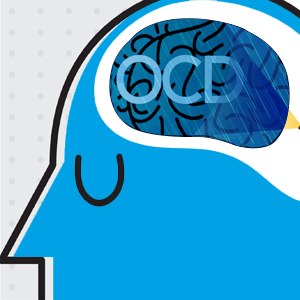Studies show that mental illnesses can actually be more common for people on the spectrum than not, and unfortunately, this issue is sometimes overlooked. Anxiety disorders tend to be the most common, with around 40% of autistic people showing symptoms of at least one anxiety disorder at any given time. Obsessive Compulsive Disorder (OCD), proves to be the most prevalent, and is characterized by obsessive and intrusive thoughts that are distressing and cause the individual to engage in compulsive behaviors to cope. OCD only becomes a disorder when it interferes with the individual’s ability to function in daily life. A Danish study conducted in 2014, later published in PLOS ONE, reported, “people with autism are twice as likely to receive a diagnosis of OCD and people with OCD are four times as likely to also have autism.” According to The OCD Treatment Centre, “Obsessive and ritualistic behaviors are one of the fundamental traits that make up Autism.” Both obsessive compulsive disorder and autism are classified as neurological disorders, and though they share many similarities, such as anxiety and intrusive thoughts, urges and feelings, there are also some crucial differences. The key to understanding these disorders lies in the differences, and knowing and understanding these differences will lead to appropriate diagnosis and treatment. However, to effectively accomplish treatment, one must have an idea of the general warning signs related to people on the spectrum that also experience OCD.

OCD is typically characterized by persistent, and distressing, thoughts. An individual diagnosed with OCD will engage in compulsive behaviors as a coping mechanism to manage those thoughts. Ritualistic behaviors are also common in autistic people, which is why it can be hard to detect whether or not someone on the spectrum also has OCD, or vice versa. An individual with OCD will engage in consistent repetitive actions, such as the need to touch certain objects repeatedly, and obsessions with certain objects or actions that seem troublesome to them. The difference between OCD and autism lies in how the individual reacts to these actions and tendencies in public. Typically, someone diagnosed with OCD will be ashamed or embarrassed of their actions, while someone on the spectrum is not as affected by what other people think.
However, while autism and OCD do overlap in some ways, autistic people tend to struggle in social situations, while people diagnosed only with OCD do not. Due to the struggles with socialization and language expression, people on the spectrum may have a hard time describing the symptoms they experience on a daily basis. The number one difference between OCD and autism is that a person with OCD is participating in their behaviors consciously, while people on the spectrum may display obsessive behaviors without self-awareness. Behavior similar to those diagnosed with OCD can show up in autistic people, but this may be a demonstration of the way their brain is wired compared to an individual with OCD feeling like they are drowning in their compulsions. It’s also important to look out for, and report, any sudden or extreme change in behavior to a medical professional, especially if it seems detrimental or harmful to the individual.
What are some behaviors you’ve noticed in an autistic student or adult that you feel could be directly linked to Obsessive Compulsive Disorder?




